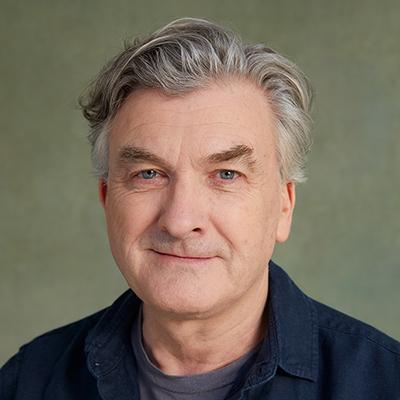A new business always starts out with an ambition and, often, a carefully thought-out plan to go with it. Then, as the reality of running a new venture hits, the mind becomes focused on the here and now. However, it is critical to keep a connection with that original plan and, in the middle of that day-to-day melee, lift your head above the parapet, scan the horizon for what might be 2, 5 or even 10 years later. Continue the thread of your plans.
Ten years seems a long way out but, when we look back a decade, we realise Twitter (2006) and the iPhone (2007) were in their infancy; these are just two of many brands that have completely changed our world. What would we have done differently if we knew what we know now back then?
Some industries seem more insulated from the rapid advances of technology, but none of us are immune. Wrigley’s Spearmint gum launched 128 years ago, would seem invincible. Yet, according to market research firm Euromonitor International, they have seen a 15% decline in recent years because the brand is no longer noticed at the check-out as consumers are all on their phones. Technology will have a direct impact on your business but also an indirect one through behavioural change.
We can’t bury our heads in the sand like Kodak did when digital photography emerged, clinging onto tangibles like manufacturing as a business foundation. It’s better to embrace change and see how the intangibles like brand can help forge a new future. Kodak’s expertise in photography went beyond developing chemicals in the eyes of their consumers and could have been a reassuring ally to them in the complex changing world of photography.
We cannot predict the future, but we can design it. Consciously and unconsciously every action we take nudges the future in a new direction. Whilst we cannot control our destiny, we can manipulate it. We can have a mission to drive us forward, we can be aware of emerging opportunities, and we can avoid possible pit falls. Ten seems to be the key number of years to aim for in our preparations. It’s far enough into the future that you can unencumber your mind from daily strife and dream of what you would like to become, but close enough in that the future is already emerging in the present day. For example, ten years ago we would have been aware that social media was just starting to change consumer behaviour.
Peter Schwartz, who pioneered future planning at Shell in the 80s, explains in his book The Art of the Long View that from the many trends out there, we need to identify which will become the causal forces on our business ‘ either by exerting pressure like competition or energising the business through new technology and shareholder ambition. These forces can be classed as either ‘fixed’, like legislation, that will happen, or ‘variable’ like consumer behaviour, that might.
The process is to collate the most potent causal forces as three plausible future scenarios with repeated fixed forces and a spread of the variable ones. A plan can then be made for each. Three seems to be the optimal number as it represents enough breadth to capture the most likely outcomes, but also few enough that they can be remembered by the company going forward. Often future visioning is kicked off as a project with the three scenarios as an outcome, but in reality, it becomes a continuous affair with the scenarios revisited and adjusted over time as new casual forces emerge and decline.
To make them feel more real at Echo, we explore these scenarios through the eyes of the consumer populating their lives with the behaviours, environments and technologies we have identified. From there, you can see the role your brand will play in their worlds and the opportunities that represents. Back in the 90s I worked with the world’s largest office furniture manufacturer, Steelcase. Their business was built around the fixed partitioning that routed power and data cables, but they identified the emerging trend of cordless technology as a significant causal force on their business. We helped them respond to this by focusing more on their expertise in ‘work’ organisational design as a differentiator to fend off the likes of IKEA, as the furniture became less specialised and more freestanding in the future.
It feels like we are living in a highly volatile world today with polarising politics, pandemics, global rebalancing between east and west. Yet, change is always happening and we need to keep our eyes open for opportunity. Dinner jacket rentals business, Moss Bros, has shrugged off their traditional image to target post pandemic Millennials in their sweatpants, who might not be going to a dinner dance but do need hire a suit to impress in their upcoming job interviews. Building on their core business, whilst targeting new consumers with a refreshed image, new products and agile digital platforms will surely secure their future.
Whilst Moss Bros needed to invest in new stock and digital platforms, these can both be completed in the short term. Future visioning comes into force when longer term investments and changes are required. Looking after our planet represents the single most important driver for the long-term changes we face. It simply cannot be solved in the short term, as supply chains will take decades to change in many cases. In can seem an insurmountable problem, but, when aligned with other causal forces, new opportunities emerge that allow a reframing of business to absorb the costs and provide consumers with new benefits. LOOP as a fledgling packaging system is an example of this, as it has the potential, over time, to replace single-use packaging with durable systems offering new consumer benefits.
The one constant here is that despite what you hear in the news, humanity is prospering. According to the late Hans Rosling in his book Factfulness, the so-called developing world as defined in 1960s no longer exists. We are all living in developed societies. This means that, whilst future visioning can protect against dangers, its main purpose is to find opportunities to prosper. So, whilst serial entrepreneurs will find opportunistic business from the present, entrepreneurs who cast their eye further forward will surely become our next captains of industry.
“
Share via:









































